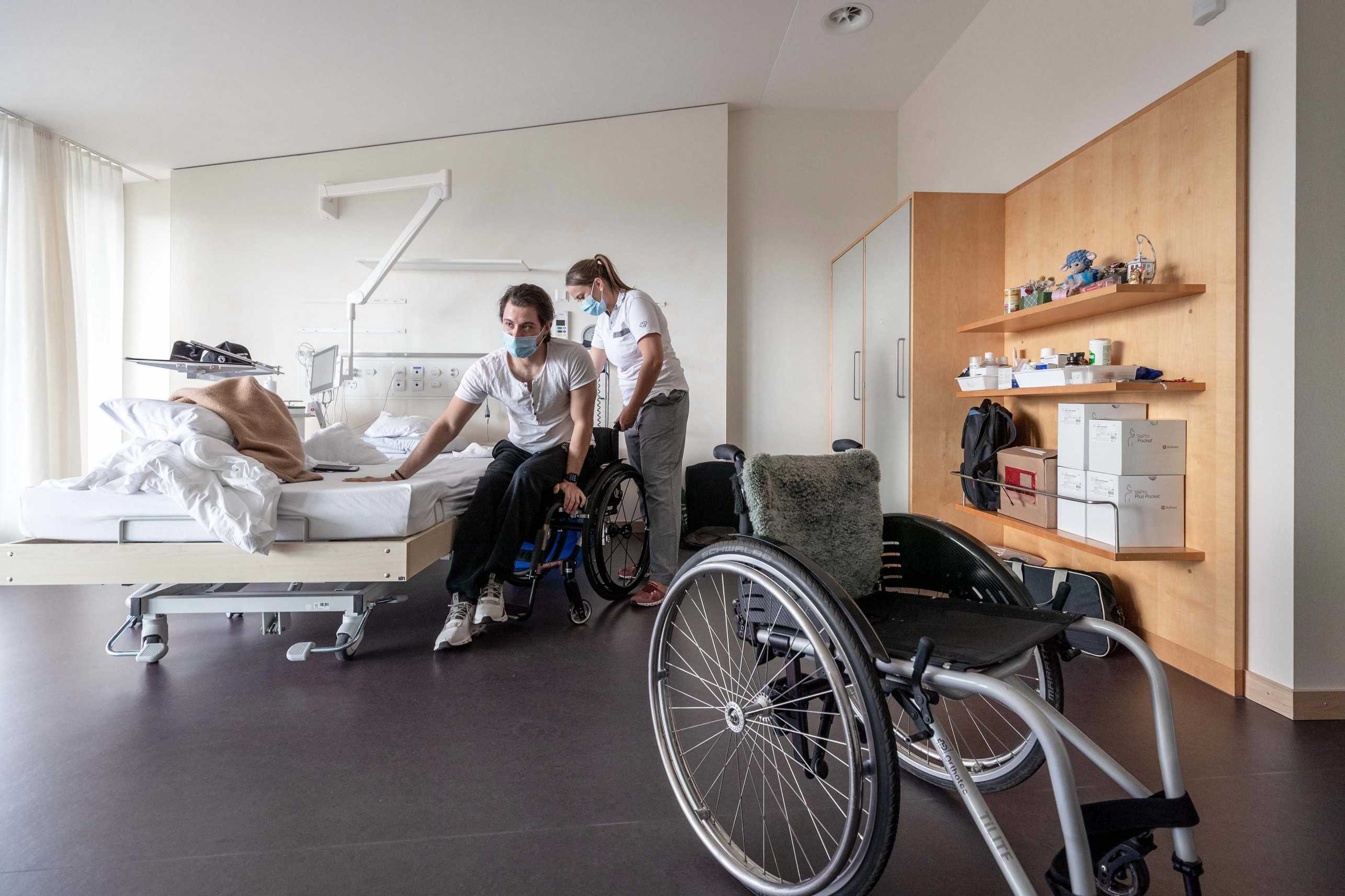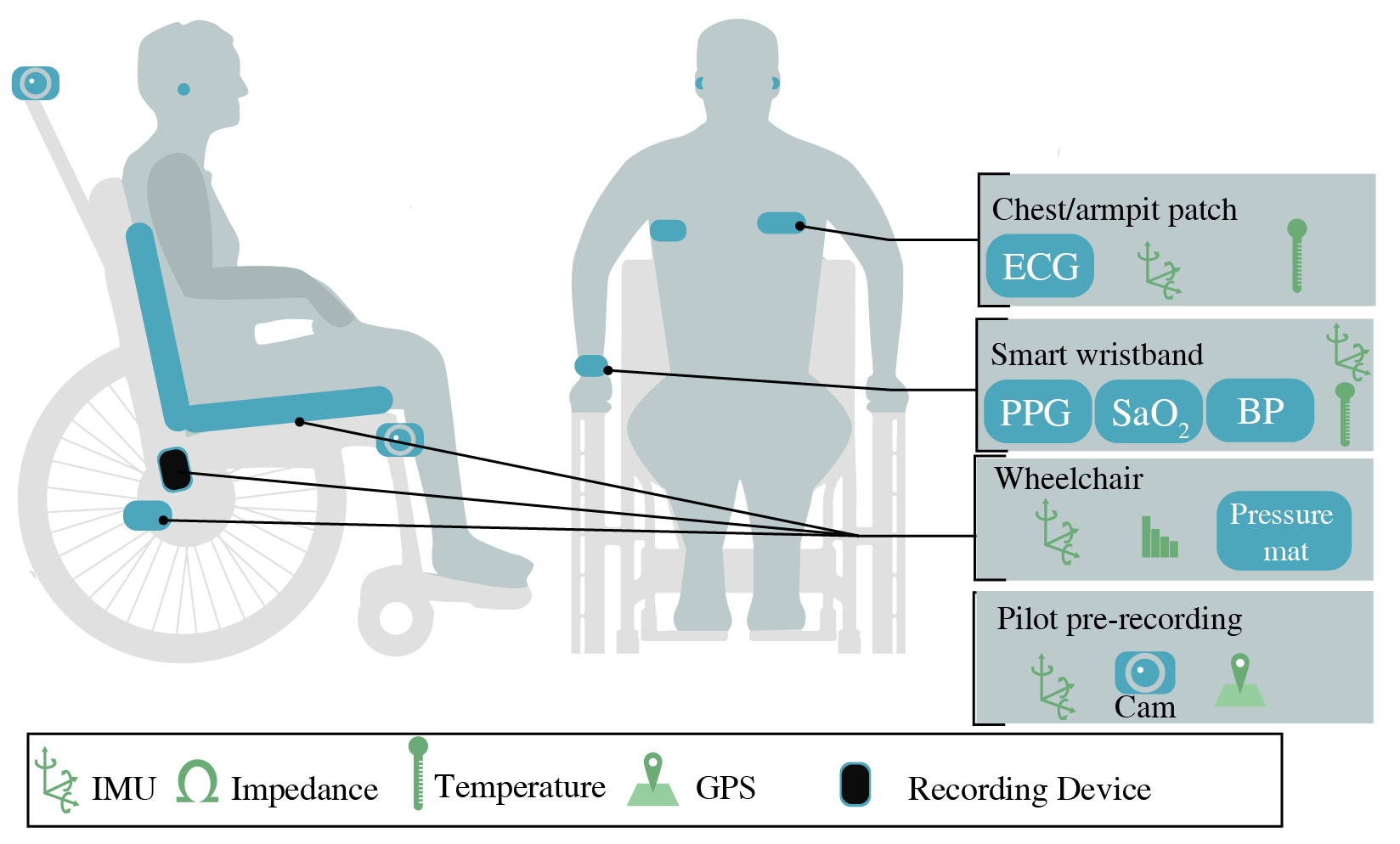Pressure Injuries Sensing and Biomarkers Modelling
Pressure injuries are sores or ulcers that happen on areas of the skin that are under pressure, in persons with spinal cord injury (SCI) this is a highly prevalent condition because of the time spent on a wheelchair or a bed. Due to the loss of sensation, persons with SCI do not perceive warning signs of this condition, such as pain.
The use of wearable and nearable sensors can enable continuous, unobtrusive, and reliable data capturing from individuals in both clinical and outpatient settings in their daily life. Herewith, opening the path towards understanding what biomarkers could be leveraged towards estimating a probable risk model for pressure injury development at specific body areas.
Collaborators
external page Swiss Paraplegic CentrePressure injuries are a complex process still unclear despite much research around it. The combination of shear and friction, the time and frequency of applied pressure, and the soft tissue’s characteristics and oxygenation level are significant factors. Nonetheless, individual’s medical history, etiology of SCI, muscle build, posture, nutritional status, and many other behavioral factors are as well significantly contributing confounders that must be accounted for.
This work within the Swiss Paraplegic Center (SPZ) is embedded within the framework of lifelong medical and social care where wearable and nereable sensing will enable us to address the challenge of continuous behavioral and physiological monitoring accounting for medical and personal records which will result on a combined multimodal data-based modeling of the pressure injury risk.
We will leverage the usage of bio-sensors for a broad range of signals (e.g., HR, RR, ECG, Temperature, Oxygenation, Movement, etc.) continuously and unobtrusively for the identification of relevant digital biomarkers.
We will develop an objective assessement method of onsets of pressure injury by fusing the multiple sensor data with retrospective clinical record analysis and ultimately construct models of the condition for preventive care through advanced machine learning.
Founded by the ETH-SPS Digital Transformation in Personalized Health Care for SCI Project

